
In today’s software architecture landscape, microservices have become a widely adopted design pattern for building scalable and maintainable applications. In this post, I’ll walk you through the process of building an e-commerce platform using microservices, based on my GitHub project ecommerce-microservices.
I’ll cover the project’s architecture, the tools I’ve used, the API endpoints, and guide you on how to set it up on your local machine. Let’s dive in!
Micro Marketplace: An E-commerce Microservices Application
Solution Overview
Micro Marketplace is a robust e-commerce application built on a microservices architecture using Spring technologies and other open-source tools.
This platform leverages the power of Spring Boot, Netflix Eureka, Spring Cloud Gateway, and KeyCloak for service development, discovery, gateway management, and security, respectively.
It incorporates Resilience4j for resilient synchronous communication and Apache Kafka for seamless event-driven asynchronous communication between services.
The observability stack includes Micrometer, Zipkin for distributed tracing, and Prometheus with Grafana for monitoring and visualization.
With a focus on scalability, resilience, and real-time interaction, Micro Marketplace provides a robust foundation for creating feature-rich online marketplaces.

Solution Architecture
Services
- Product Service: Manages product information (e.g., creation, retrieval, updates) using a MongoDB database.
- Order Service: Handles order management (e.g., creation, retrieval) using a MySQL database.
- Inventory Service: Manages product inventory using a MySQL database.
- Notification Service: A stateless service for sending notifications regarding orders or other updates.
Major Components
- Discovery Server: Uses Netflix Eureka for service registration and discovery, allowing microservices to locate and interact with each other dynamically.
- API Gateway: Deployed using Spring Cloud Gateway to route external requests to appropriate microservices.
- Auth Server: Secures microservices using KeyCloak for authentication and authorization.
- Circuit Breaker: Resilience4j prevents cascading failures through circuit-breaking mechanisms.
- Message Broker: Apache Kafka facilitates asynchronous communication for order notifications.
- Observability Stack: Implements Micrometer for metrics, Zipkin for tracing, Prometheus for metrics collection, and Grafana for visualization.
Tech Stack Used
- Languages & Frameworks: Java, Spring Boot, Spring Cloud
- Databases & Message Queue: MongoDB, MySQL, Apache Kafka
- API Gateway: Spring Cloud Gateway
- Service Discovery: Netflix Eureka
- Circuit Breaker: Resilience4J
- Security: KeyCloak
- Observability: Micrometer, Zipkin, Prometheus, Grafana
- Build & Containerization: Maven, Docker, Jib
Getting Started
Prerequisites
Ensure that Docker and Docker Compose are installed and running.
Deployment
- Clone the repository
git clone https://github.com/crypticseeds/ecommerce-microservices.git
cd ecommerce-microservices- Start the containers:
docker compose up -d- Confirm that the containers are running:
docker psUsage
Getting Credentials from KeyCloak
- Access the KeyCloak Admin UI at http://localhost:8080/
- Navigate to the Realm:
spring-boot-microservices-realm. - Go to the Client:
spring-cloud-client. - Under the Credentials section, copy the Client Secret.
Local Keycloak Access Token Setup
To retrieve the access token from Keycloak locally, add the following entry to your system’s hosts file:
- Windows:
C:\Windows\System32\drivers\etc\hosts - Linux/Mac:
/etc/hosts
127.0.0.1 keycloakThis step is necessary to ensure that your local Keycloak instance resolves correctly via 127.0.0.1.
Setup Postman Authentication (Required in Next Steps)
On the Postman request page, set the Authorization type to OAuth 2.0 and configure a New Token with the following:
- Token Name: token
- Grant Type: Client Credentials
- Access Token URL:
http://keycloak:8080/realms/spring-boot-microservices-realm/protocol/openid-connect/token - Client ID: spring-cloud-client
- Client Secret: (copy from KeyCloak)
Click on Get New Access Token and then Use Token.
Alternatively, you can use the following curl command:
curl -X POST "http://keycloak:8080/realms/spring-boot-microservices-realm/protocol/openid-connect/token" \
-H "Content-Type: application/x-www-form-urlencoded" \
-d "grant_type=client_credentials" \
-d "client_id=spring-cloud-client" \
-d "client_secret=<client-secret>"Accessing API Endpoints
POST /api/product
- Method: POST
- Endpoint:
http://localhost:8181/api/product - Authorization: Use the OAuth 2.0 token obtained earlier.
- Body:
{
"name": "Test Product",
"description": "Test Description",
"price": 100
}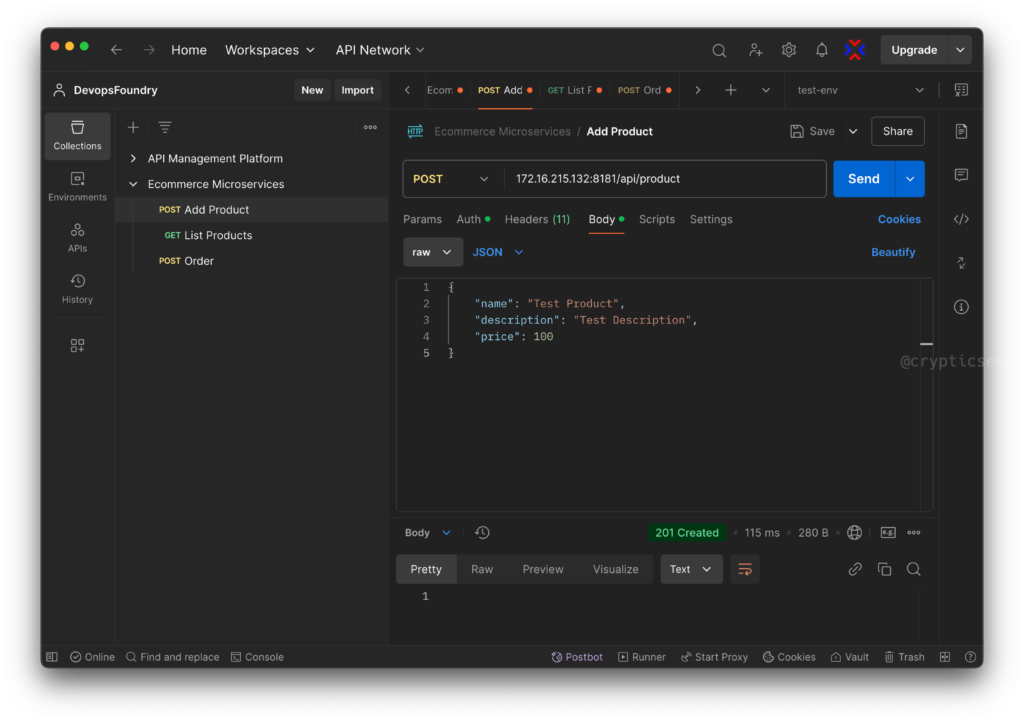
GET /api/product
- Method: GET
- Endpoint:
http://localhost:8181/api/product - Authorization: Use the OAuth 2.0 token obtained earlier.
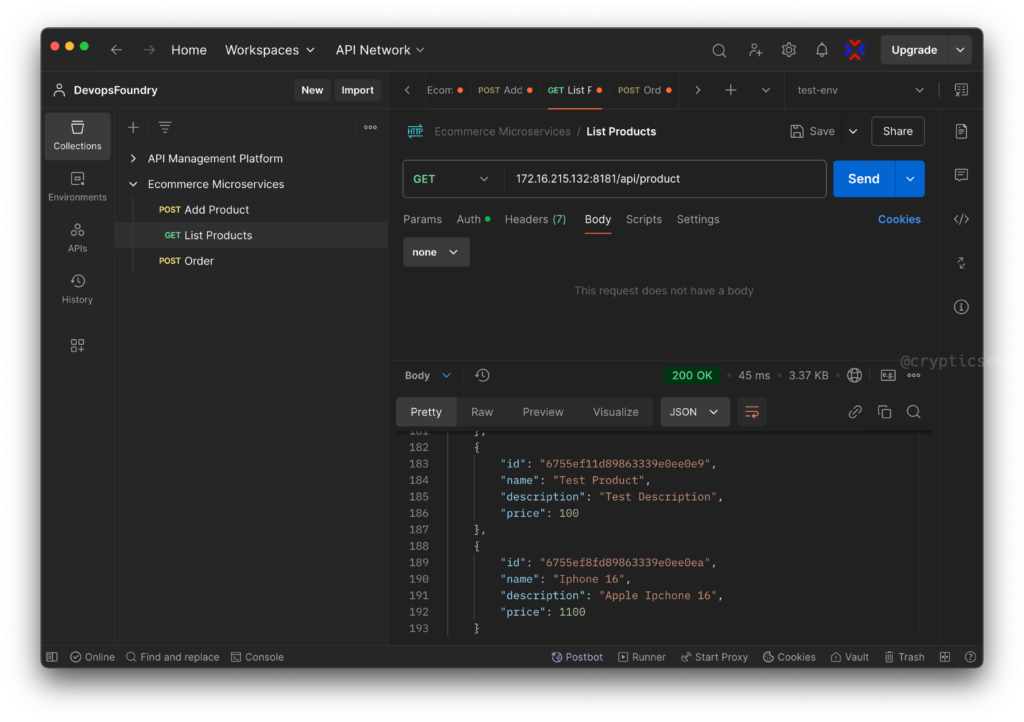
POST /api/order
- Method: POST
- Endpoint:
http://localhost:8181/api/order - Authorization: Use the OAuth 2.0 token obtained earlier.
- Body:
{
"orderLineItemsDtoList": [
{
"skuCode": "iphone_16",
"price": 1100,
"quantity": 1
}
]
}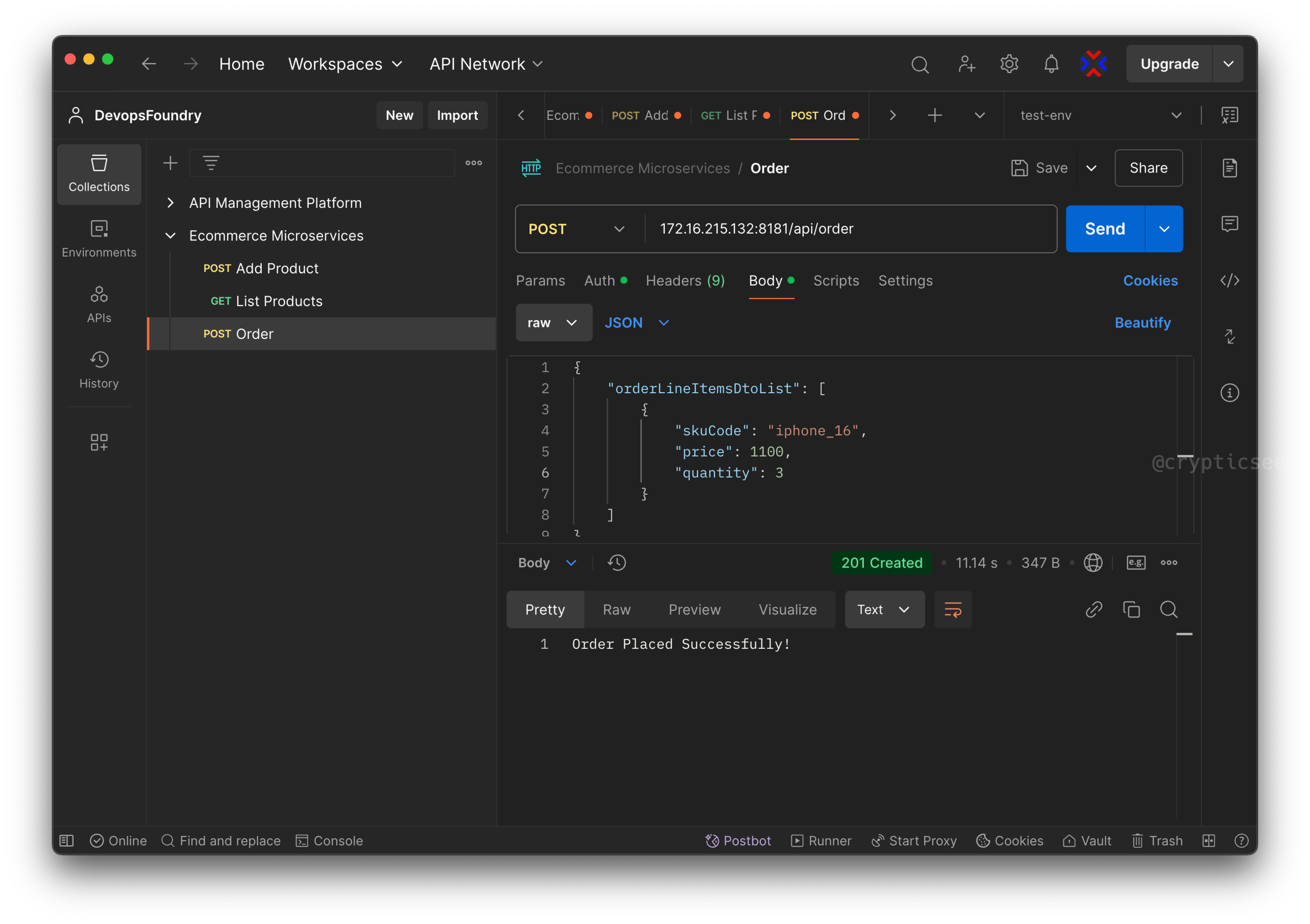
Components UI
KeyCloak Admin UI
Access KeyCloak at http://localhost:8080/, and use the following settings:
- Realm:
spring-boot-microservices-realm - Client:
spring-cloud-client
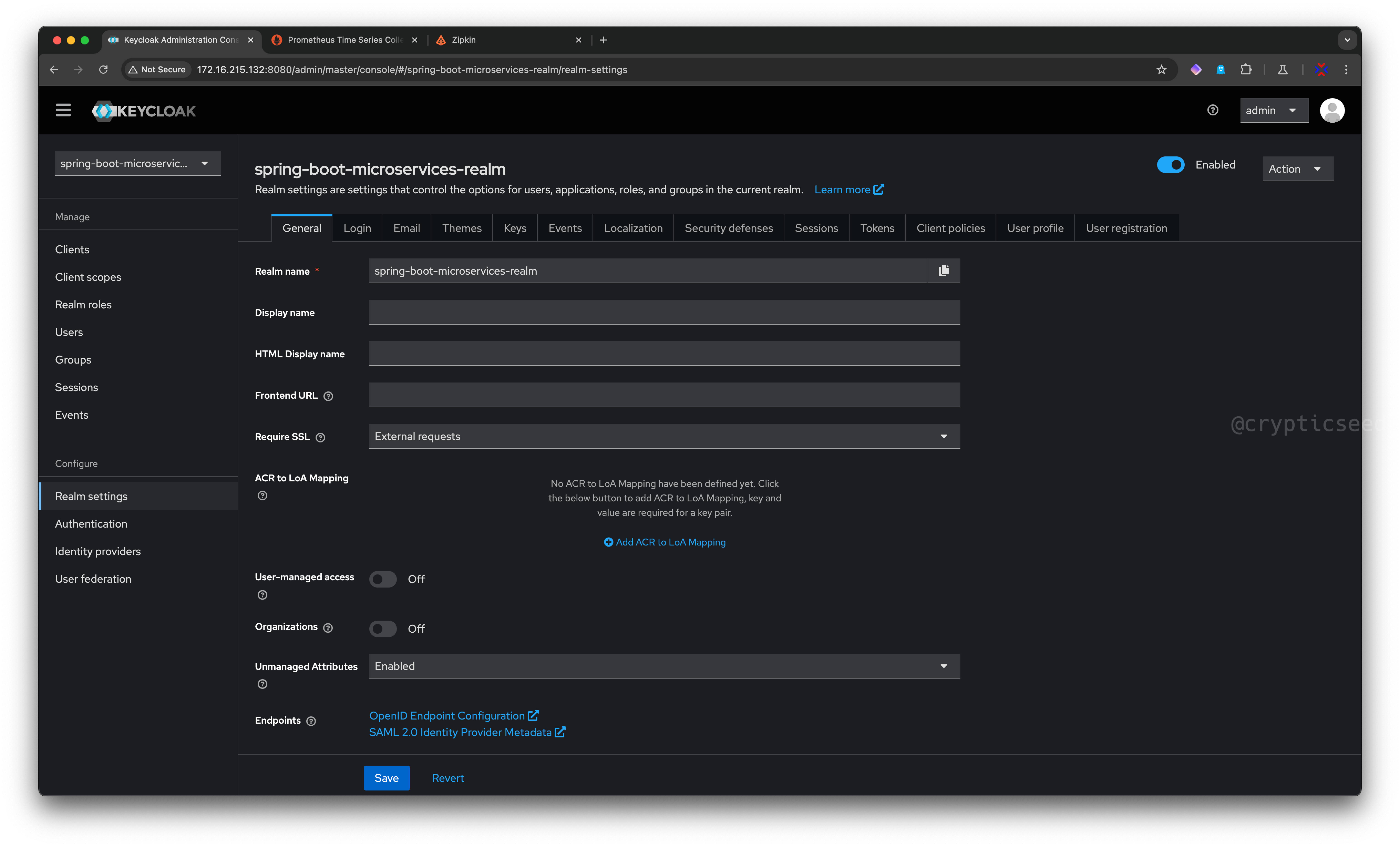
Eureka Dashboard
View discovered services (clients) on http://localhost:8761/
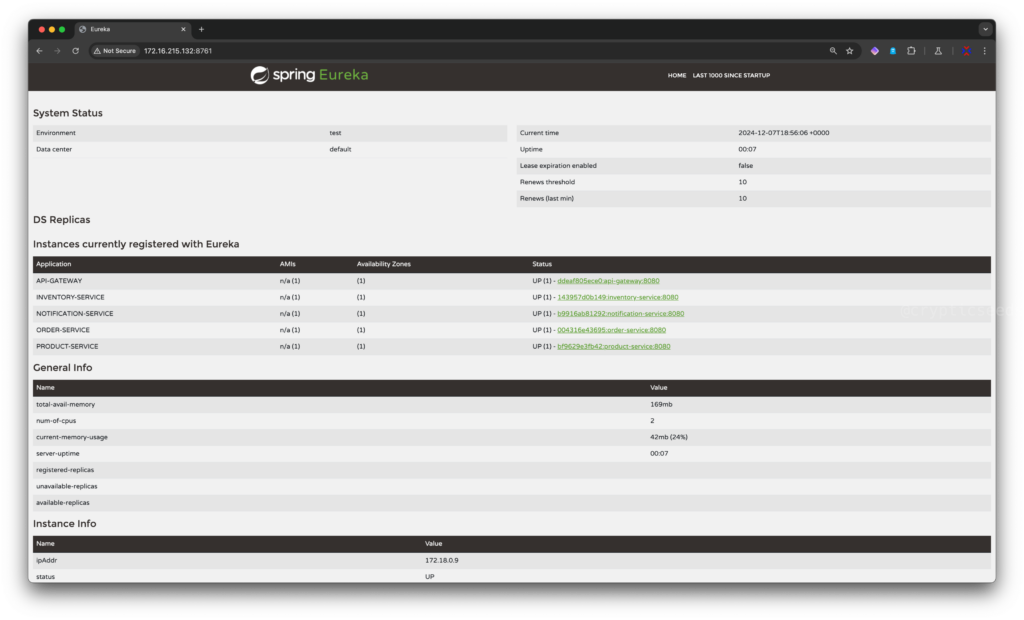
Zipkin UI
Monitor traces for API calls on the Zipkin UI.
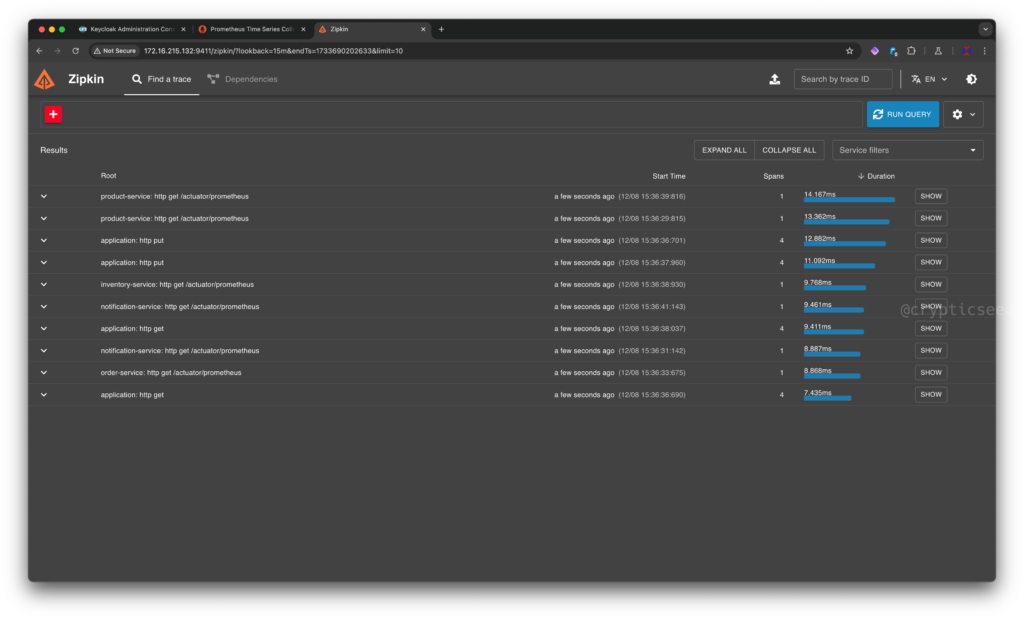
Prometheus UI
Access the Prometheus UI at http://localhost:9090/
- Use Prometheus Graph Query to analyze metrics.
- Monitor Prometheus Targets for health status.
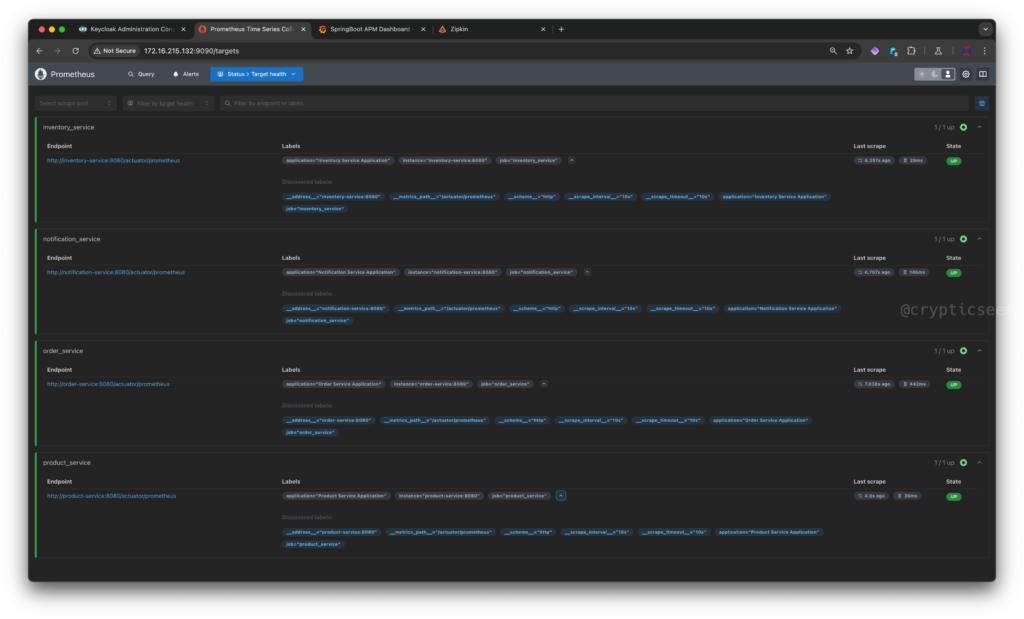
Grafana Dashboard
Access the Grafana Dashboard at http://localhost:3000/
- Create a Data Source and import the grafana-dashboard.json file.
- View performance data via the created dashboard.
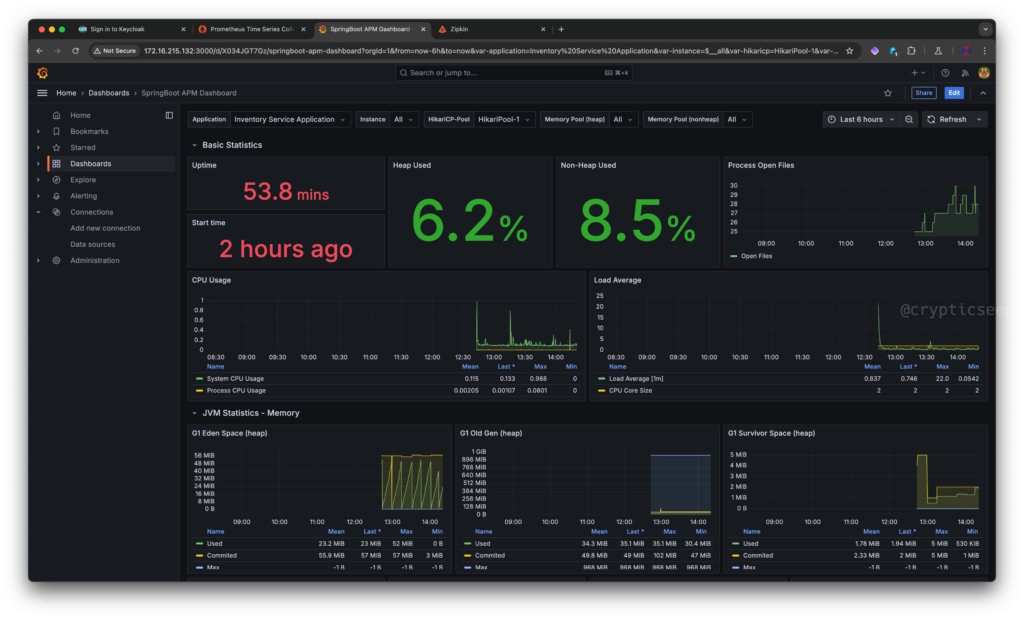
Environment Cleanup
To stop and remove all containers and resources (network, volume, etc.):
docker compose down -v
Conclusion
Building an e-commerce platform with microservices offers several benefits, including scalability, resilience, and maintainability. With this project, I’ve demonstrated how to create an e-commerce platform with core microservices like user authentication, product management, order handling, and payment processing. I also included essential monitoring tools like Micrometer, Prometheus, Grafana, and Zipkin UI to ensure observability into the platform’s health and performance.
Additionally, with the integration of Apache Kafka for event-driven communication and Netflix Eureka for service discovery, this architecture is highly scalable and can be extended to meet future needs.
The project is open-source, so feel free to check it out on GitHub and contribute!
I hope this post helps you understand how microservices can be used to build a powerful, scalable e-commerce platform. Happy coding!
Femi Akinlotan
DevOps and cloud engineering expert. I forge cutting-edge and resilient solutions at DevOps Foundry. I specialize in automation, system optimization, microservices architecture, and robust monitoring for scalable cloud infrastructures. Driving innovation in dynamic digital environments.




